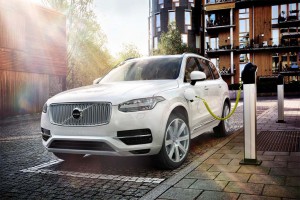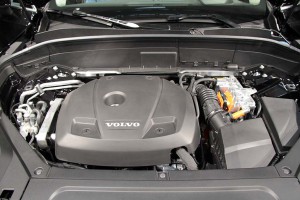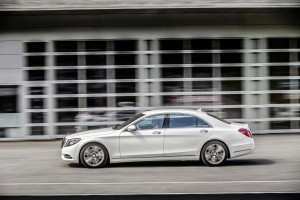Volvo is clearly getting charged up over battery power. The Swedish maker, which only recently added its first plug-in hybrid model, plans to add PHEV versions of its entire line-up, and will also introduce its first pure battery-electric vehicle, or BEV, by 2019.
Unlike some competitors, Volvo put an emphasis on performance with its first plug-in, the so-called “Twin Engine” drivetrain introduced on the 2016 Volvo XC90. It is expected to follow a similar strategy with future plug-based models.
“We believe that the time has come for electrified cars to cease being a niche technology and enter the mainstream,” Hakan Samuelsson, CEO of Volvo Cars, said in a statement.
(Gas-powered cars could soon become the exception, rather than the rule, in California. Click Here for more.)
Volvo has been trying to set its own unique course in a bid to differentiate itself from strong luxury brands like Mercedes-Benz and BMW. It generated headlines when, a few years ago, it announced plans to go to an all-four-cylinder line-up, abandoning the six and eight-cylinder models traditionally associated with the luxury market.
The 2016 Volvo XC90 is the first new model to emerge under that strategy. The Swedish maker offers several different powertrain options for the utility vehicle, but its T8 Twin Engine package is the most powerful – as well as the most fuel-efficient. The twin-charged 2.0-liter I-4 gas engine is paired with an electric driveline drawing power from a lithium-ion battery pack.
The combined system pumps out a peak 407-horsepower and 472 pound-feet of torque, enough to launch the seven-seater from 0 to 60 in about 5.5 seconds. But the XC90 T8 still gets an EPA-rated 58 MPGe, and can clock about 25 miles on battery power alone.
(VW, Audi aim to electrify their entire line-ups. Click Here to learn more.)
The drivetrain, like the “Scalable Product Architecture” of the XC90, will be shared with a number of different Volvo models. The maker hasn’t said whether it will develop a second plug-in system for its smaller models. But it confirmed it is working on a downsized platform it calls the Compact Modular Architecture, or CMA.
But Volvo expects that electrified cars will generate about 10% of its global sales in “the medium term.”
That will also include a pure battery model to launch in 2019. The maker is offering no details about this project.
Now owned by Chinese automaker Geely, Volvo’s decision to press into electrification comes at a time when batteries are becoming smaller and more energy dense. Meanwhile, prices that ran about $1,000 per kilowatt-hour at the beginning of the decade are expected to dip closer to $200 per kWh by the time the Volvo BEV reaches market.
“We have come to a point where the cost versus benefit calculation for electrification is now almost positive. Battery technology has improved, costs are going down, and public acceptance of electrification is no longer a question,” Peter Mertens, Volvo’s global R&D chief.
Apparently, a lot of industry planners are thinking alike. Mercedes-Benz, for one, expects to roll out 10 plug-in models by 2018. Audi is looking to offer an electrified version of every model in its line-up, though that will include everything from micro-hybrids to full electric vehicles. BMW is going so far as to plan for the switch to a plug-in powertrain for the next-generation M3. And Cadillac will offer a plug-in of the new CT6 flagship with the same power and performance as the twin-turbo version of the sedan.
(Toyota expects to virtually eliminate gas-powered models by 2050. Click Here for more.)



